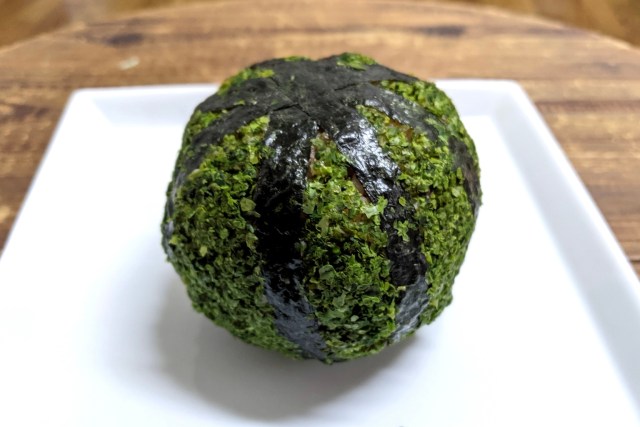
Some seeds you can’t spit out.
From 3 August the Seibu department store in Ikebukuro, Tokyo is holding a Midsummer Gourmet Festival. One of the standout items for sale at this event are onigiri rice balls that look just like watermelons.
That seemed like a fun summer take on a classic Japanese food, so our veteran reporter Mr. Sato went down to check it out. However, when he got on the train to Ikebukuro, he was hit with a sudden wave of shame and remorse.
Most writers, when looking back on their body of work, often find things that they wrote which makes them shudder with revulsion today, having grown and developed their skills. In Mr. Sato’s case, an article was written on 13 July 2010 titled “I tried eating watermelon on rice.”
It was a truly boneheaded idea which a young, inexperienced Mr. Sato came up with that putting diced watermelon on rice might actually taste good. When it didn’t, he decided to double down on his theory and added soy sauce and vinegar to the concoction, ultimately deluding himself into thinking that made it better. Still not satisfied with his horrible premise, he then proceeded to make a watermelon egg salad, which also was not good.
▼ Cub reporter Mr. Sato, eating watermelon egg salad
Ever since that catastrophe, he vowed to never write about watermelon and rice together again. Of course, there aren’t many opportunities to write about watermelon and rice together, so he had forgotten about that vow until just now, as he was heading out to buy a watermelon onigiri.
This lingering feeling of regret hung over him even when arriving at Yunotani Tawara Daimyo in the basement of Seibu, where the watermelon rice balls are sold.
Mr. Sato bought a Watermelon Rice Ball for 650 yen (US$5) as well as Edamame & Salty Kelp and Sockeye Salmon ones for 250 yen ($2) each. At this store, all onigiri are made with Koshihikari rice from Uonuma, Niigata Prefecture, so they sell at a bit of a premium compared to other rice balls.
The Watermelon Rice Ball, however, was particularly pricey, owing to its relatively large size of about 10 centimeters (3.9 inches) in diameter. Its delightful design was a luxury as well. Yunotani used two different types of seaweed to accomplish the watermelon-like stripes on the outer surface.
Mr. Sato still had no idea what was inside though. Did they have the gall to put in actual pieces of watermelon like he had 12 years ago? He shivered at the thought of it as he bisected the onigiri for examination.
Our reporter was relieved to find that Yunotani was not as foolish as he had been, and refrained from putting real watermelon with rice. Still, the inside also had a very watermelon aesthetic. Spicy pollock roe, known as mentaiko was used to give the rice a reddish hue while maintaining a beloved onigiri taste, and little black sesame seeds were used to simulate the watermelon seeds.
It tasted great too, largely due to the fine Koshihikari rice’s sublime texture that was enhanced by the extra layer of seaweed. Mr. Sato thought that this was how someone with real creativity would fuse watermelon and rice together.
There’s still time to try a Watermelon Rice Ball while the Midsummer Gourmet Festival continues until 22 August. For those who can’t get one — whatever you do — don’t put actual watermelon on rice. You’ll only live to regret it.
Store information
Yunotani Tawara Daimyo / ゆのたに俵大名
Tokyo-to, Toshima-ku, Minamiikebukuro 1-28-1, Food Hall First Basement
東京都豊島区南池袋1-28-1 食品館地下1階
Hours: 10 a.m. – 9 p.m.
Photos © SoraNews24
● Want to hear about SoraNews24’s latest articles as soon as they’re published? Follow us on Facebook and Twitter!

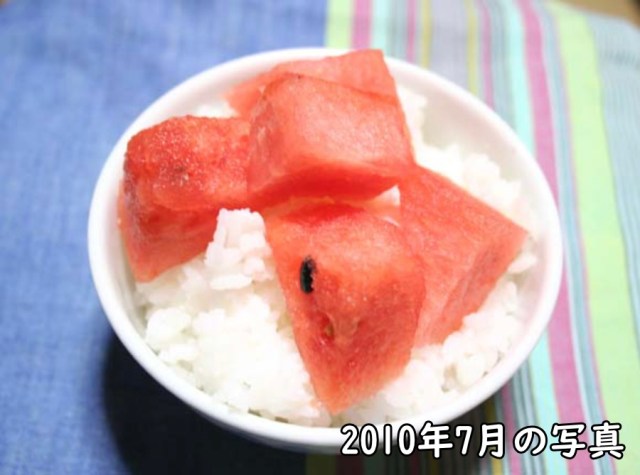
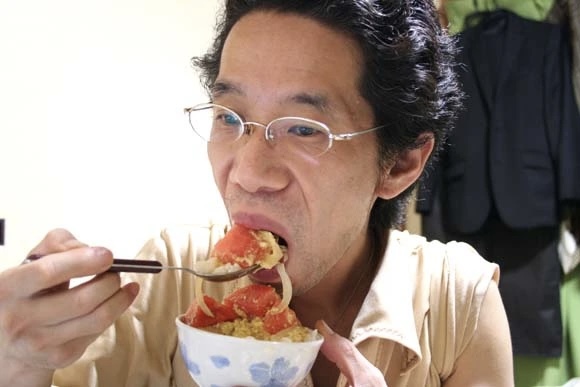
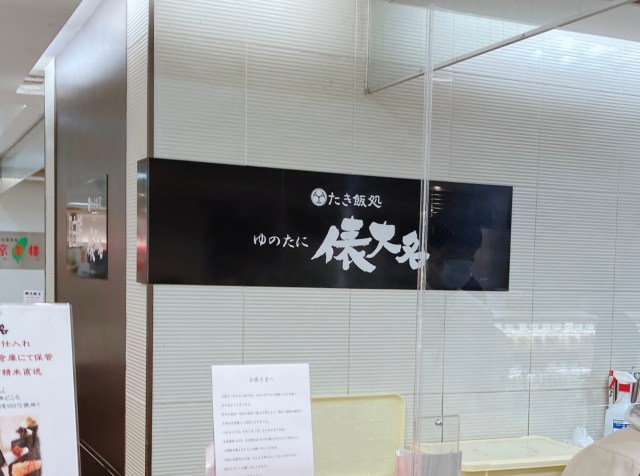
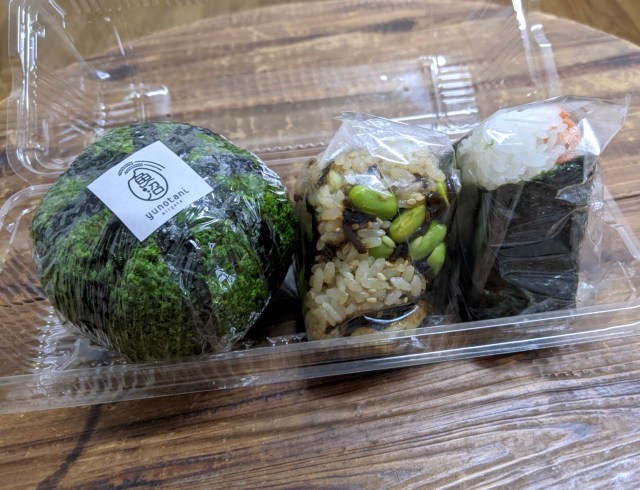
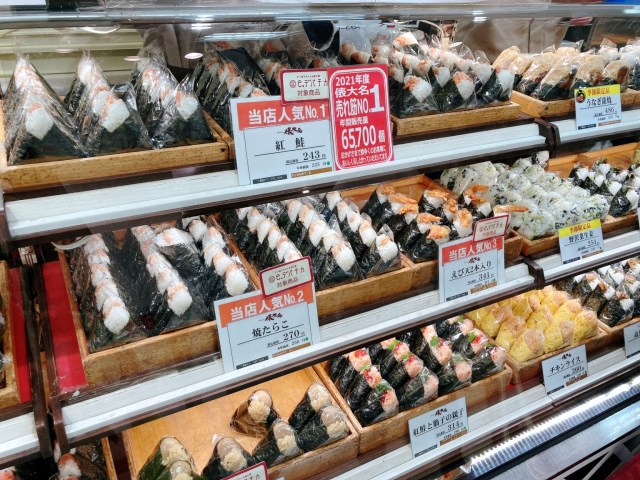
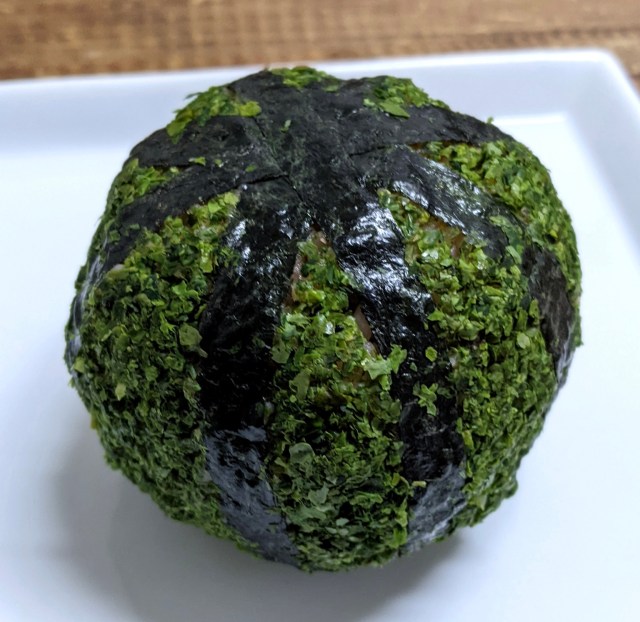
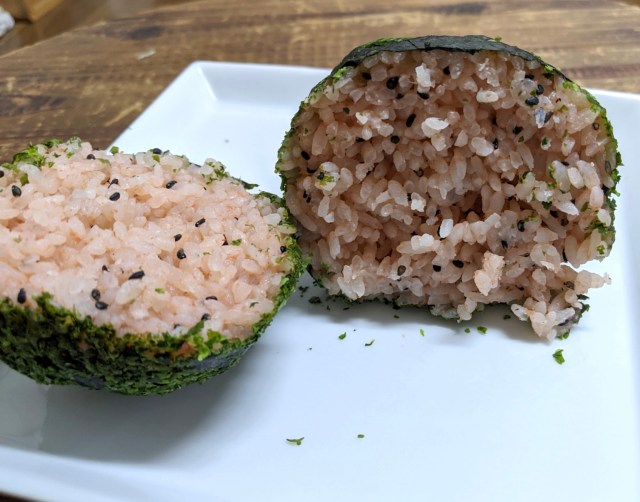

 U.S. Rapper Lil Baby makes waves in Japan, but for something other than his music
U.S. Rapper Lil Baby makes waves in Japan, but for something other than his music Waste not, want not: Japanese netizens share delicious ways they prepare watermelon rinds
Waste not, want not: Japanese netizens share delicious ways they prepare watermelon rinds Got rice? The tastiest rice ever compels bread-fan Mr. Sato to eat more rice than ever before
Got rice? The tastiest rice ever compels bread-fan Mr. Sato to eat more rice than ever before Watermelon Dango: Traditional Japanese dessert gets a new look for summer with an amazing flavour
Watermelon Dango: Traditional Japanese dessert gets a new look for summer with an amazing flavour The Big Bomb Onigiri Japanese rice ball helps us conquer mountain race but conquers us in the end
The Big Bomb Onigiri Japanese rice ball helps us conquer mountain race but conquers us in the end Foreigner’s request for help in Tokyo makes us sad for the state of society
Foreigner’s request for help in Tokyo makes us sad for the state of society Seaside scenery, history, and so many desserts on Yokohama’s Akai Kutsu【Japan Loop Buses】
Seaside scenery, history, and so many desserts on Yokohama’s Akai Kutsu【Japan Loop Buses】 Japanese city loses residents’ personal data, which was on paper being transported on a windy day
Japanese city loses residents’ personal data, which was on paper being transported on a windy day Randomly running into a great sushi lunch like this is one of the best things about eating in Tokyo
Randomly running into a great sushi lunch like this is one of the best things about eating in Tokyo Harajuku Station’s beautiful old wooden building is set to return, with a new complex around it
Harajuku Station’s beautiful old wooden building is set to return, with a new complex around it Japan’s summertime towelket pillowcases are even better with the addition of Ghibli stars【Photos】
Japan’s summertime towelket pillowcases are even better with the addition of Ghibli stars【Photos】 Japan’s new wearable air conditioner belt is here just in time for the Tokyo heat wave
Japan’s new wearable air conditioner belt is here just in time for the Tokyo heat wave Japanese politician’s birthrate plan: Have parents nag their kids to have “at least three babies”
Japanese politician’s birthrate plan: Have parents nag their kids to have “at least three babies” Japanese woman stumbles on the power of the infamous “gaijin seat” phenomenon during flight
Japanese woman stumbles on the power of the infamous “gaijin seat” phenomenon during flight Japan has only one time zone, and sunset comes a lot earlier in Tokyo【Photos】
Japan has only one time zone, and sunset comes a lot earlier in Tokyo【Photos】 McDonald’s new Happy Meals offer up cute and practical Sanrio lifestyle goods
McDonald’s new Happy Meals offer up cute and practical Sanrio lifestyle goods Japanese ramen restaurants under pressure from new yen banknotes
Japanese ramen restaurants under pressure from new yen banknotes French Fries Bread in Tokyo’s Shibuya becomes a hit on social media
French Fries Bread in Tokyo’s Shibuya becomes a hit on social media Studio Ghibli releases new action figures featuring Nausicaä of the Valley of the Wind characters
Studio Ghibli releases new action figures featuring Nausicaä of the Valley of the Wind characters Red light district sushi restaurant in Tokyo shows us just how wrong we were about it
Red light district sushi restaurant in Tokyo shows us just how wrong we were about it New private rooms on Tokaido Shinkansen change the way we travel from Tokyo to Kyoto
New private rooms on Tokaido Shinkansen change the way we travel from Tokyo to Kyoto Tokyo Tsukiji fish market site to be redeveloped with 50,000-seat stadium, hotel, shopping center
Tokyo Tsukiji fish market site to be redeveloped with 50,000-seat stadium, hotel, shopping center Beautiful Ghibli sealing wax kits let you create accessories and elegant letter decorations【Pics】
Beautiful Ghibli sealing wax kits let you create accessories and elegant letter decorations【Pics】 Studio Ghibli releases Kiki’s Delivery Service chocolate cake pouches in Japan
Studio Ghibli releases Kiki’s Delivery Service chocolate cake pouches in Japan New definition of “Japanese whiskey” goes into effect to prevent fakes from fooling overseas buyers
New definition of “Japanese whiskey” goes into effect to prevent fakes from fooling overseas buyers Our Japanese reporter visits Costco in the U.S., finds super American and very Japanese things
Our Japanese reporter visits Costco in the U.S., finds super American and very Japanese things All-you-can-drink Starbucks and amazing views part of Tokyo’s new 170 meter-high sky lounge
All-you-can-drink Starbucks and amazing views part of Tokyo’s new 170 meter-high sky lounge More foreign tourists than ever before in history visited Japan last month
More foreign tourists than ever before in history visited Japan last month New Pokémon cakes let you eat your way through Pikachu and all the Eevee evolutions
New Pokémon cakes let you eat your way through Pikachu and all the Eevee evolutions Disney princesses get official manga makeovers for Manga Princess Cafe opening in Tokyo
Disney princesses get official manga makeovers for Manga Princess Cafe opening in Tokyo Sales of Japan’s most convenient train ticket/shopping payment cards suspended indefinitely
Sales of Japan’s most convenient train ticket/shopping payment cards suspended indefinitely Sold-out Studio Ghibli desktop humidifiers are back so Totoro can help you through the dry season
Sold-out Studio Ghibli desktop humidifiers are back so Totoro can help you through the dry season Japanese government to make first change to romanization spelling rules since the 1950s
Japanese government to make first change to romanization spelling rules since the 1950s Ghibli founders Toshio Suzuki and Hayao Miyazaki contribute to Japanese whisky Totoro label design
Ghibli founders Toshio Suzuki and Hayao Miyazaki contribute to Japanese whisky Totoro label design Doraemon found buried at sea as scene from 1993 anime becomes real life【Photos】
Doraemon found buried at sea as scene from 1993 anime becomes real life【Photos】 Tokyo’s most famous Starbucks is closed
Tokyo’s most famous Starbucks is closed One Piece characters’ nationalities revealed, but fans have mixed opinions
One Piece characters’ nationalities revealed, but fans have mixed opinions We asked a Uniqlo employee what four things we should buy and their suggestions didn’t disappoint
We asked a Uniqlo employee what four things we should buy and their suggestions didn’t disappoint Princesses, fruits, and blacksmiths: Study reveals the 30 most unusual family names in Japan
Princesses, fruits, and blacksmiths: Study reveals the 30 most unusual family names in Japan Can we pick out the expensive Japanese watermelon in a blind taste test?
Can we pick out the expensive Japanese watermelon in a blind taste test? Someone’s mother carved this Love Live! watermelon art, left the Internet applauding
Someone’s mother carved this Love Live! watermelon art, left the Internet applauding The world’s most famous sushi restaurant sells seaweed too, so we made nori rice balls with it
The world’s most famous sushi restaurant sells seaweed too, so we made nori rice balls with it What happens when you cook beer with potato chips in a rice cooker?
What happens when you cook beer with potato chips in a rice cooker? Move over square watermelons – Japan now has square watermelon bread!
Move over square watermelons – Japan now has square watermelon bread! Watermelon soup? We test out a strangely alluring recipe from Ajinomoto【Recipe】
Watermelon soup? We test out a strangely alluring recipe from Ajinomoto【Recipe】 Behold the fluffiest rice omelet in Tokyo…possibly the world!
Behold the fluffiest rice omelet in Tokyo…possibly the world! Mr. Sato shows us what happens when you try to cook rice with only eggs 【SoraKitchen】
Mr. Sato shows us what happens when you try to cook rice with only eggs 【SoraKitchen】 Which Japanese convenience store sells the best onigiri rice balls?【Taste test】
Which Japanese convenience store sells the best onigiri rice balls?【Taste test】 Should you warm up your convenience store onigiri rice balls in the microwave?【Taste test】
Should you warm up your convenience store onigiri rice balls in the microwave?【Taste test】 Real-life Fruit Ninja! Watch Isao Machii slice up flying fruit like a boss 【Video】
Real-life Fruit Ninja! Watch Isao Machii slice up flying fruit like a boss 【Video】 Yakiniku Like in Tokyo starts serving up solo shabu shabu hot pot, and we tried it
Yakiniku Like in Tokyo starts serving up solo shabu shabu hot pot, and we tried it Taste-testing Japan’s crazy-expensive 3,240-yen (US$29) persimmon
Taste-testing Japan’s crazy-expensive 3,240-yen (US$29) persimmon Awesome rice ball making machine promises perfectly pressed onigiri in just 30 seconds【Video】
Awesome rice ball making machine promises perfectly pressed onigiri in just 30 seconds【Video】 Okinawan soul fool Pork Tamago Onigiri sold not at a five-star restaurant, but at an airport
Okinawan soul fool Pork Tamago Onigiri sold not at a five-star restaurant, but at an airport Japanese cat owner stuns Internet with photo of seemingly square kitty
Japanese cat owner stuns Internet with photo of seemingly square kitty
Leave a Reply